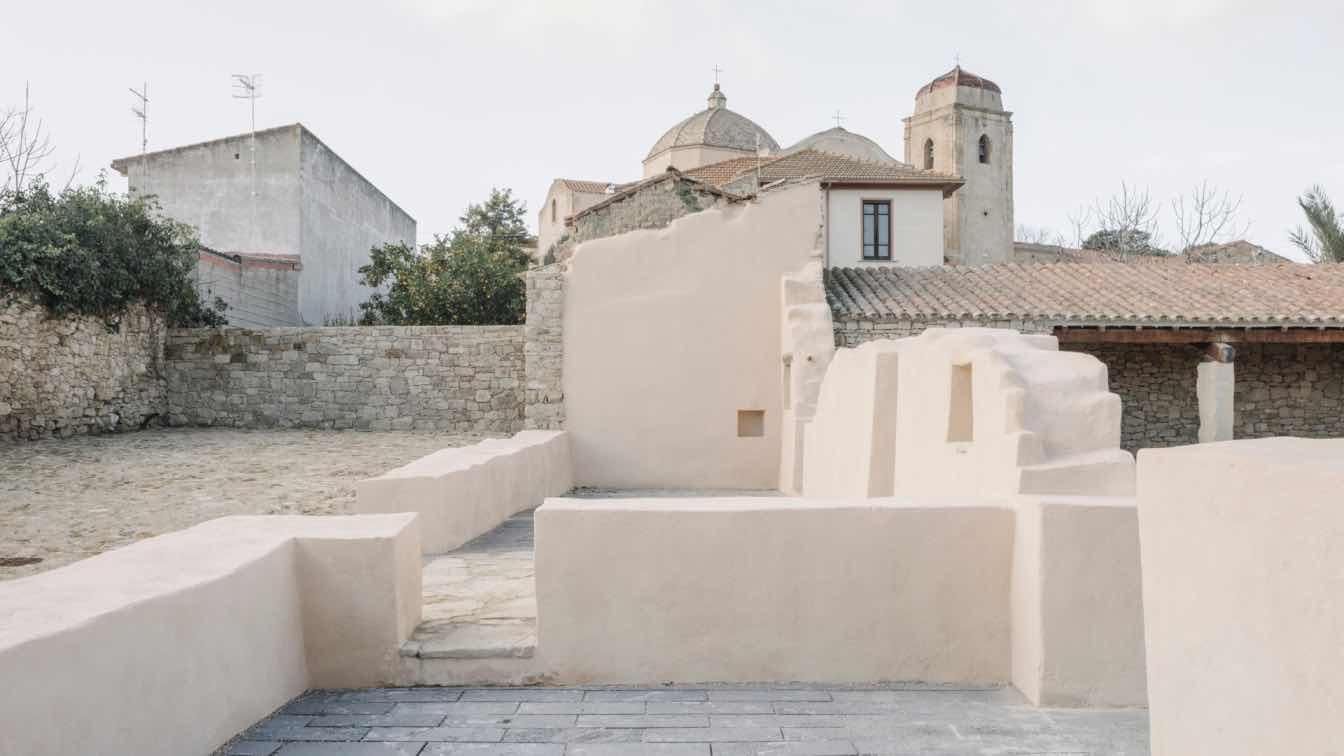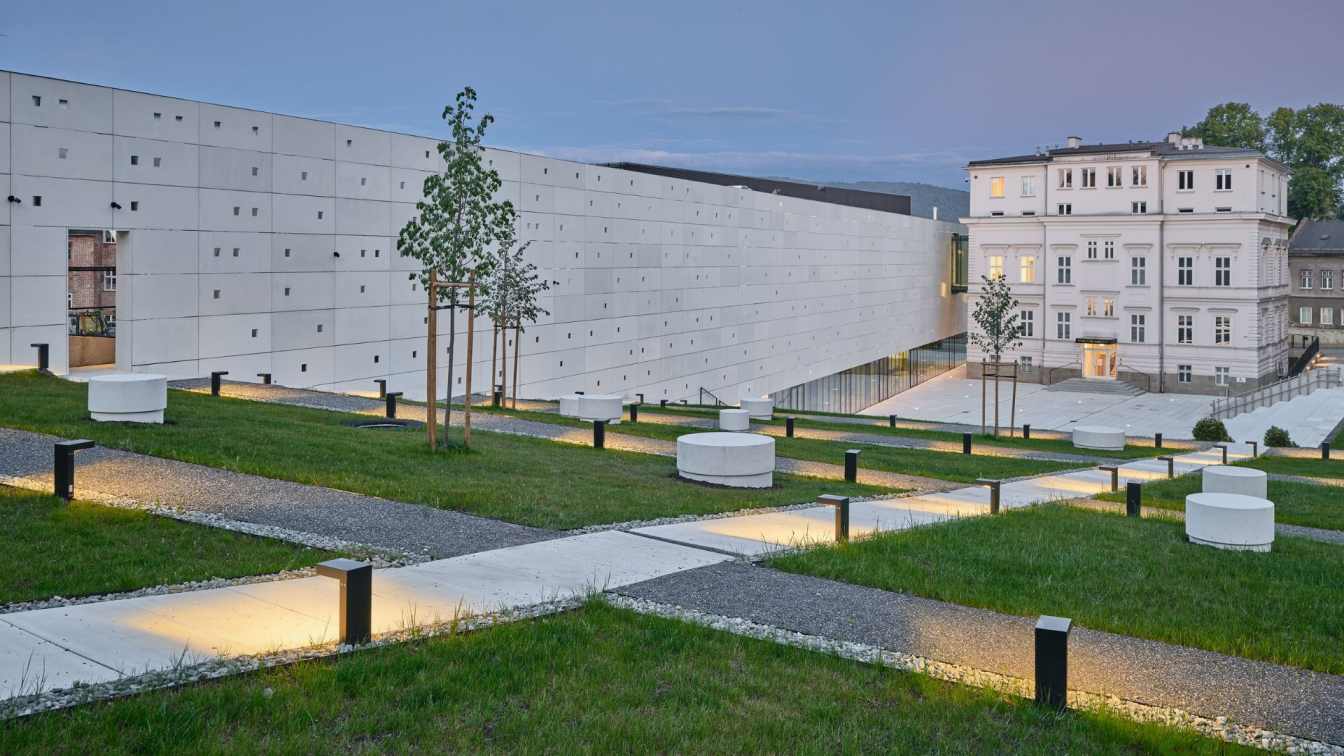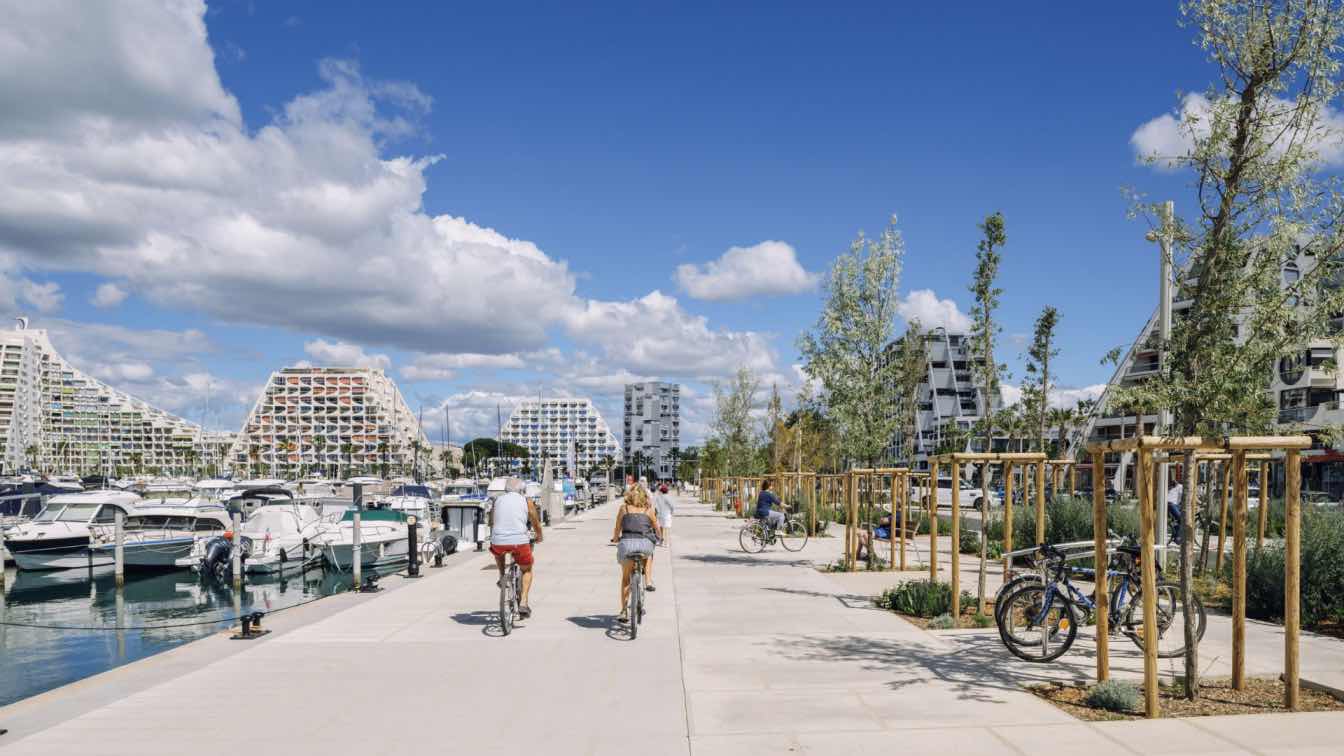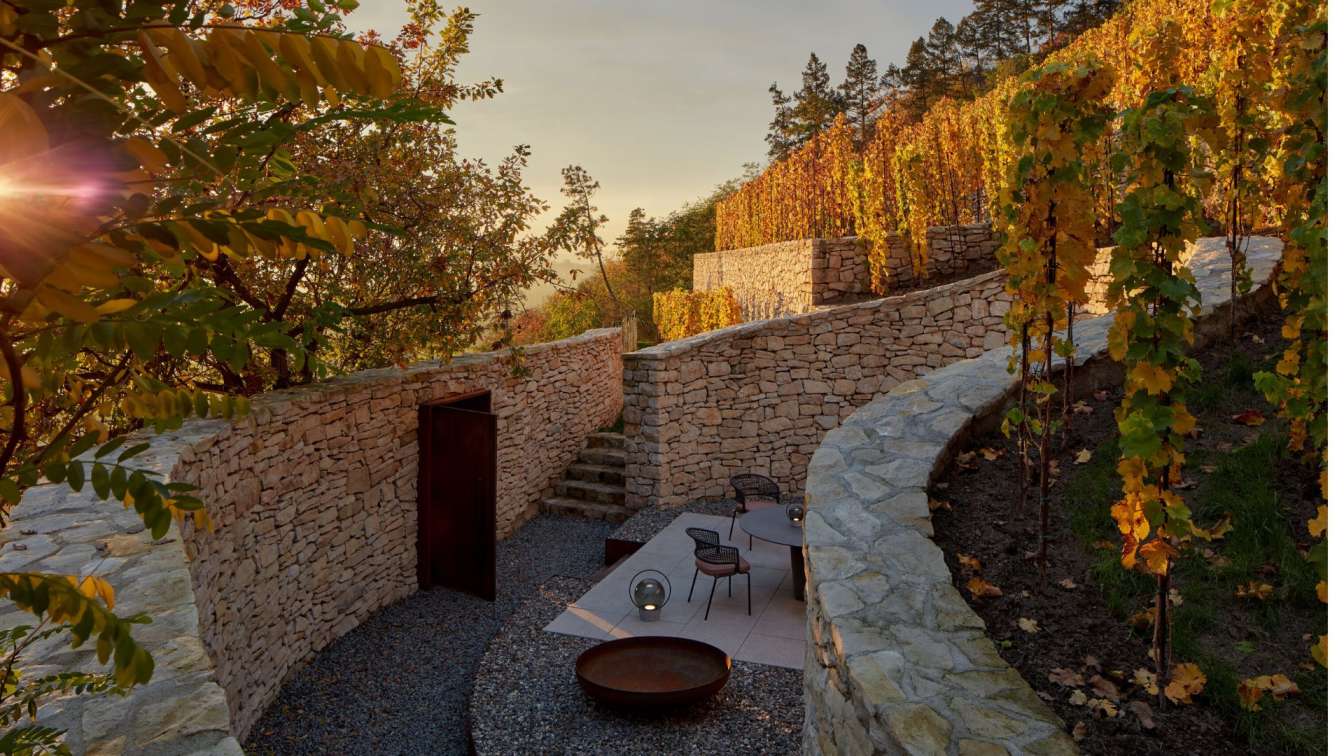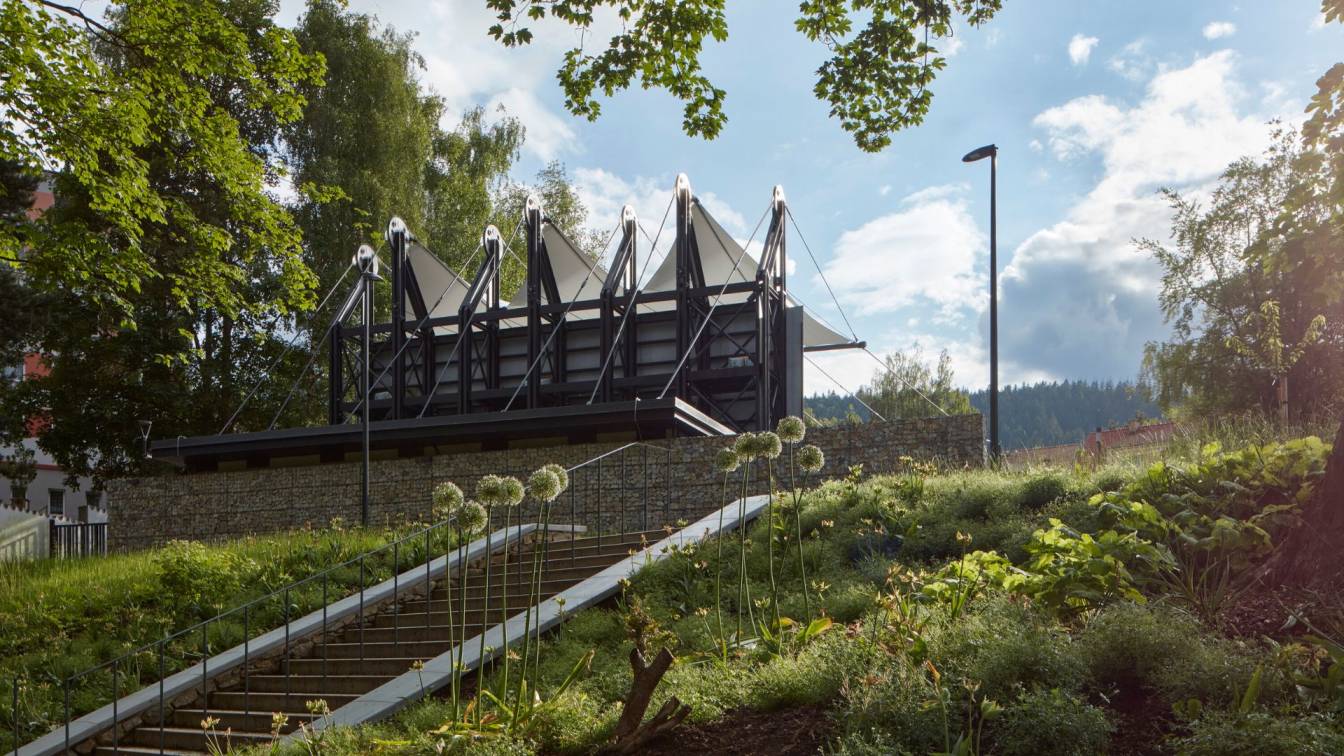Simala becomes a laboratory of territorial regeneration, where ruins are transformed into active witnesses of history. The intervention creates a public space where community and memory are intertwined, enhancing the pre-existences without erasing their identity.
A Dialogue Between Memory and Modernity in a Small Sardinian Village
Nestled in the heart of Sardinia, 45 kilometers from Oristano, the small agricultural and pastoral village of Simala preserves a profound connection between past and future. At its core lies a remarkable architectural intervention—a project that embraces the poetics of ruins while celebrating their symbolic value.
Curated by the young architect Martino Picchedda, this initiative demonstrates how a sensitive and contemporary approach can transform historic structures into catalysts for social and cultural regeneration.
A XIX-Century Legacy Reimagined
At the heart of Simala, a 19th-century courtyard building—once the residence of a landowner and the center of agricultural activity—has been reimagined as a public exhibition space. Respectfully interpreting the passage of time, the project views architectural traces as layered narratives, weaving memory into the fabric of modernity.

Rediscovering Ruins: The Evocative Power of Decay
The intervention begins with a delicate process of unveiling. Overgrown vegetation and decades of dust are removed, not as mere functional acts but as symbolic gestures, revealing the latent potential of the site. The ruins, previously seen as relics, become the focal point of the design, telling stories through their enduring presence. Surviving walls, though fragile, gain a theatrical presence, framing the public space like stage sets. These ruins define an open void—a space that invites rather than excludes, a threshold between the intimate and the communal.
An Architecture of Memory and Landscape
The project draws inspiration from masters who grappled with historical preexistence, such as the visionary drawings of Piranesi and the material poetry of Alberto Burri’s Gibellina. In the courtyard, the traditional “impedrau” paving pays homage to the tactile memory of Sardinian courtyards. Indoors, basalt flooring laid with wide joints on a draining bed captures and channels water through an intricate network of pipes. Fragments of the original stone tiles, or “tellas”, are thoughtfully reintegrated, weaving continuity into the narrative of the space.
A Stage for Community Life
The courtyard, once a private agricultural space, now unfolds as a public exhibition plaza. The minimalist interventions serve the historical architecture, highlighting the raw materiality of the walls treated with ecological lime-based plaster. The ruins, cleaned and consolidated, wear their incompleteness proudly. Their simple, timeworn surfaces recount stories of labor, resilience, and daily life. This space becomes a metaphor for a Sardinia that acknowledges its roots while embracing renewal, bridging the past and future seamlessly.
An Intervention Between Art and Landscape
The project’s poetic essence lies in its simplicity. It focuses on materials, memory, and the ability of space to awaken latent collective emotions. The result is a meeting place—a stage where history and contemporaneity coexist, dedicated to showcasing local products and promoting slow tourism, increasingly vital to Simala’s economic and cultural dynamics.
Sede legale: strada Val Salice 89, 10131 Torino, Italia Sede operativa: via Belfiore 36, 10125 Torino, Italia. This intervention embodies an architecture that listens rather than dominates. Through this project, Simala emerges as a living laboratory of territorial regeneration—a testament to how architecture can reinterpret memory to craft an open and shared narrative.

Talking About Martino Picchedda Architect
Martino Picchedda is an Italian architect and engineer who graduated in 2007 in Building Engineering-Architecture from the University of Cagliari. Immediately after graduation, he embarked on a career marked by meaningful experiences and significant projects. Following a formative period at Giovanni Vaccarini Architetto studio in Giulianova (2008–2009), Picchedda founded his own practice, Martino Picchedda Architettura Ingegneria, in 2011 in Turri, a small town in the Marmilla region of Sardinia.
Deeply connected to Sardinian traditions, Picchedda incorporates the island’s cultural values and materials into his work, reinterpreting them through a contemporary lens that harmonizes with historical and natural contexts. Specializing in public works, architectural recovery, and building restoration, his projects are characterized by a philosophy that combines creativity, functionality, and sustainability. From conservative restoration to urban regeneration, his interventions aim to preserve and enhance local identities while celebrating the memory and essence of places.
House of Traditions in Simala (OR). A transformative restoration project that has garnered significant accolades, including nominations for the Piranesi Prize 2024 and the Gubbio Prize 2024. This intervention exemplifies the virtuous enhancement of local heritage, where modernity merges with tradition through an essential and poetic language. Extension of the Cemetery in Pauli Arbarei (SU). This project reinterprets a place of memory as a reflective and celebratory space. With a focus on respecting the lives of the departed, the intervention preserves and elevates the symbolic and meditative function of the cemetery. The thoughtful design, emphasizing detail and sustainability, has transformed the cemetery into a contemplative haven, enriching its commemorative purpose.
Revitalization of Historic Roads in Nurachi (OR). A rehabilitation of Mariano Street, replacing asphalt with paving stones and cobblestones, this project highlights the local traditional architecture along the roadway. The choice of materials was crucial in harmonizing the old and the new, maintaining the authenticity of the setting while improving accessibility and welcoming visitors.

























